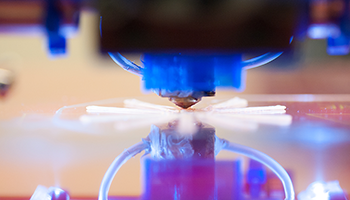- Feb 28, 2024
In recent years, 3D printing services have emerged as transformative tools in the realm of manufacturing, offering innovative solutions for businesses seeking efficient and customized production methods. But what exactly is a 3D printing service, and how does it fit into the broader landscape of manufacturing alongside traditional processes like mill machining? Let's explore the fundamentals of 3D printing services and their significance in today's machining shops.
At its core, a 3D printing service is a specialized manufacturing service that utilizes additive manufacturing technology to create three-dimensional objects layer by layer from digital designs. Unlike traditional subtractive manufacturing processes like mill machining, which involve cutting away material from a solid block, 3D printing builds objects by adding successive layers of material until the final product is formed. This additive approach enables greater design freedom, allowing for the creation of complex geometries and intricate structures that may be difficult or impossible to achieve through conventional machining methods.
In a machining shop setting, where precision and efficiency are paramount, integrating 3D printing services alongside traditional machining capabilities can offer numerous advantages. While mill machining excels at producing high-precision parts from solid blocks of material, it is often limited by the complexity of the designs and the time-consuming nature of machining processes. 3D printing services complement mill machining by providing a cost-effective means of producing custom prototypes, tooling, and low-volume production parts with minimal material waste and lead times.

One of the key benefits of 3D printing services is their ability to rapidly iterate and prototype designs, allowing manufacturers to quickly validate concepts and bring products to market faster. Unlike traditional machining methods, which may require extensive tooling and setup time for each iteration, 3D printing enables on-demand production of prototypes directly from digital designs. This agility is particularly valuable in industries such as aerospace, automotive, and medical, where innovation and time-to-market are critical factors in staying competitive.
Furthermore, 3D printing services offer versatility in material selection, with options ranging from plastics and metals to ceramics and composites. This versatility enables manufacturers to choose the most suitable materials for their specific applications, whether it's producing lightweight aerospace components, durable automotive parts, or biocompatible medical implants. With advancements in metal 3D printing technology, such as selective laser melting (SLM) and direct metal laser sintering (DMLS), manufacturers can now achieve high-quality, fully dense metal parts with intricate geometries that were once considered impossible to produce through additive manufacturing.
In addition to prototyping and low-volume production, 3D printing services also play a vital role in tooling and jigs production, offering a cost-effective alternative to traditional machining methods. By utilizing 3D printed tooling and fixtures, manufacturers can reduce lead times, minimize costs, and improve production efficiency. Whether it's creating custom fixtures for assembly operations or producing complex injection molds for plastic components, 3D printing services provide a flexible and scalable solution for manufacturing tooling needs.
In conclusion, 3D printing services have revolutionized the manufacturing landscape by offering innovative solutions for rapid prototyping, low-volume production, and tooling applications. By complementing traditional machining methods like mill machining, 3D printing services provide manufacturers with greater design flexibility, faster iteration cycles, and cost-effective production capabilities. As technology continues to evolve and materials become more advanced, the role of 3D printing services in machining shops will only continue to expand, driving innovation and pushing the boundaries of what's possible in modern manufacturing.


